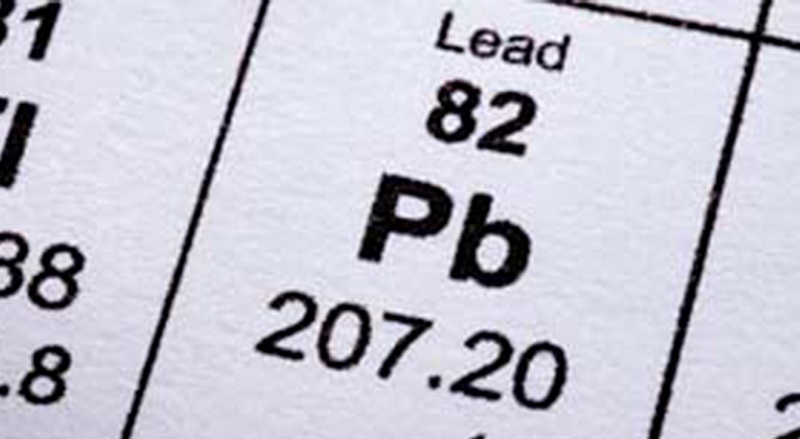Lead is a bluish-white heavy metal widely used in several industries and applications. It is commonly added as pigments in lead-based paints which are used in painting houses and toys. Art supplies such as pencils and colors also contain lead. Some gasoline products also include traces of lead in their composition. Other uses of lead include batteries, sheathings, and ammunitions. Lastly, lead is naturally present in the environment due to pollution.
So people may get lead poisoning easily than they think, which is a very serious condition and can sometimes be fatal. It can cause severe mental illness and physical impairment when not properly handled. This normally occurs over a period of months or years when lead builds up in the body. It is therefore important to educate oneself with proper knowledge and information about lead poisoning symptoms and other information.

What Are the Symptoms of Lead Poisoning?
Symptoms in newborns
Babies that are exposed to lead even before birth might have the following symptoms:
Born prematurely
Low birth weight
Slow growth rate or growth delays
Symptoms in children
Children are primarily at risk to lead poisoning. They are more susceptible and vulnerable to intellectual disability that might give to the following symptoms:
Delay in development
Difficulties in learning
Irritability and short tempered
Weight loss
Fatigue and dullness
Abdominal pain
Vomiting
Constipation
Loss of hearing
Seizure
Symptoms in adults
Adults are also at risk to lead poisoning. It is dangerous and can cause the following symptoms:
High blood pressure
Joint and muscle pain
Difficulty in concentrating
Headache
Abdominal pain and cramps
Sleeping problems
Loss of appetite
Fatigue
Mood disorders
Numbness
Anemia
Reduced sperm count
Miscarriage, stillbirth, or premature birth
Lead poisoning symptoms can also vary according to the extent. Exposure to low levels of lead can cause risk and irreversible damage in brain development, especially in children. While higher levels of lead can cause kidney failures and nervous system damages in both children and adults. Seizures, unconsciousness, and even death can be experienced when very high levels of lead are present in the blood of children and adults.
What Causes Lead Poisoning?
The poisoning occurs when a lead is ingested or breathed. This element has no taste or smell and is not visible to the naked eye. It is widespread in nature due to the numerous products that contain lead. Some of the most common sources that can allow lead exposures include the following:
Lead-based paints used in houses
Paints used in toys and household furniture
Bullets
Curtain weights
Pipes, sinks, and faucets
Paint sets and art supplies
Soil polluted by car exhaust
Canned foods
Jewelry
Pottery and ceramics
Batteries
Cosmetics
Traditional ethnic medicines
Occupations
Who Are at Higher Risk for Lead Poisoning?
Lead poisoning may occur to anyone. But children are of higher risk and higher chances to be affected by high levels of lead. The risk may increase especially when:
Children live or regularly visits home or structures built before 1978. The risks increase when houses and buildings were built before 1950 where lead-based paints were commonly used.
Children are immigrants or refugees from the other country. Their country of origin may have been exposed to the higher number of lead.
Children are six years old or younger. This will increase the risk due to the following reasons:
They frequently put their hands in their mouth.
They sometimes swallow nonfood items.
They have higher absorption rate to lead.
They have quick brain development.
Other age groups have also a higher risk of lead poisoning when:
People drink water from pipes that were soldered with lead.
People work in industries with higher exposure to lead such as metal smelters and stained-glass artists.
People are fond of doing hobbies with traces of leads like pottery making.
People eat foods from cans made with lead solders.
People cook or store foods in ceramic containers.
People eat or breathe traditional remedies with herbs and vitamins that contain lead.
People live in the industrially polluted environment.
How to Diagnose Lead Poisoning
Diagnosing lead poisoning may be difficult. Some may not show any symptoms while others may exhibit signs similar to another disease. Different approaches may be done to know whether a person is suffering from lead poisoning.
Perform blood testing. The doctor will ask several questions and perform a physical examination to look for signs and symptoms of lead poisoning. If the doctor suspects of poisoning, a blood test can be done to determine the amount of lead present in the blood.
Screening programs. Some countries offer screening programs to check the level of lead in the blood. This is commonly done in children who are more likely to be exposed to lead. Several factors are being considered prior to testing such as location and structure of the house. Adults can also undergo testing given that their jobs are exposed or involved with lead.
For pregnant women or those planning to get pregnant. Ask doctors about the risk of lead poisoning. Routine testing for pregnant women is not recommended especially if there are no lead poisoning symptoms experienced or observed.
Lead levels present in the blood are measured in micrograms per deciliter (mcg/dL). There is no known safe level of lead in the blood. However, indicators are used to determine the possible unsafe level, especially in children. A level of 5 mcg/dL may already be unsafe for children. If lead level reaches 45 mcg/dL or higher, treatment is already deemed necessary.
How Is Lead Poisoning Treated?
Lead poisoning can be treated in various ways.
Removing the source of lead. Ask professionals to remove any possible sources of lead present in the home and workplace. This may include the paints, the dirt, and dust that come along. Make sure that no contaminated clothing is brought to the home or in other places.
Proper nutrition. Always ensure a healthy and strong body. Eat nutritious and well-balanced meals. Iron-rich foods should be taken to help reduce the lead levels in the body.
Chelation therapy. For high lead levels, chelation medicines can be taken. These medicines bind to the lead and help in removing these harmful elements in the body.
Treatments and cures are available but it can no longer reverse the damage that has been done by too much exposure to lead. Remember that prevention is better than cure and if you suspect about lead poisoning symptoms, get checked for early management.

View All Comments /Add Comment